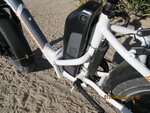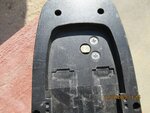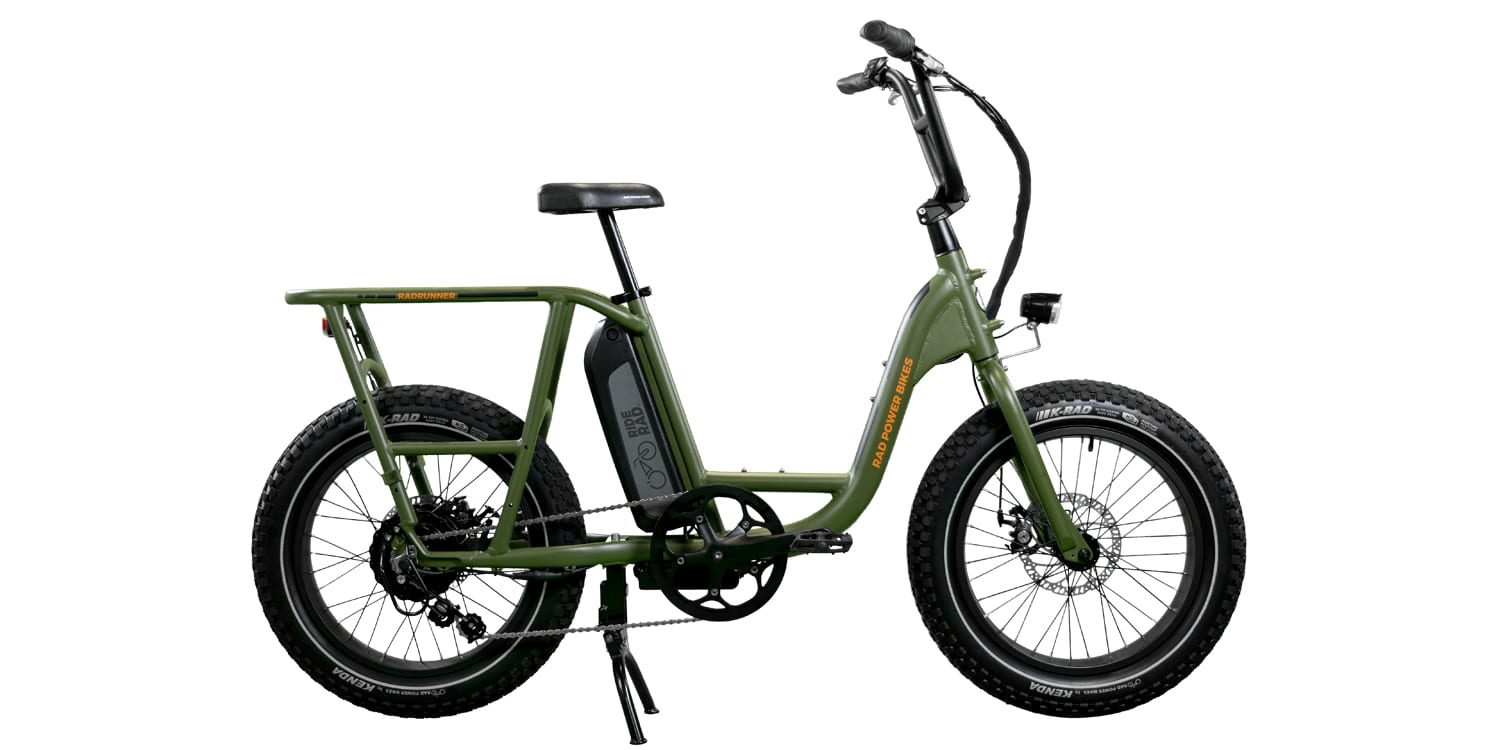Banzai
Active Member
Braking News
Over the past few years the RADMini design has evolved with 3 or 4 significant changes since it was first introduced. Quickly becoming a popular take along for side trips by vacationers, many also serve as the main transportation for riders around the country. They can perform all the same duties as the full size bikes even though the design is specific for easy foldup and stowing, and so their compact design shows some differences in handling compared to its bigger siblings. Some good and some, not so good.
The RADMini is a natural for traversing all sorts of terrain, and more capable of running off-road than the RADCity design from RAD Power Bikes, even with better maneuverability in tighter places than the full size Rover. The 20" fat tires can handle the soft sand common to the SoCal Mojave Desert, but by the same token, can also slide easily if confronting a layer of soft sand sitting on the hard paved roadways. That is all too common in my area, dumped there when the rain turns the roads into rivers. It plays havoc with tires. Cars and pickups are not exempt, and the drivers will stay at a fast rate in order to prevent getting stuck. Unfortunately remaining unstuck has more priority for them than the safety of others using that road.
For all the fun the dunes provide when I'm out booney hopping, it can also really suck if not keeping oneself alert to the possible dangers it sometimes can present. All the RAD bikes have tires that will do well in soft sand. The fat tires do better by rolling over the sand instead of cutting through it as narrower tires do. Assuming the tire pressure has been lowered sufficiently, following a straight path through sand when on narrower tires like those mounted on RADCity bikes, the pace must be kept at a faster rate of speed to lessen the chances of soft sand redirecting the bike completely off the trail. If necessary to apply the brakes, soft sand can also influence the fat tires in the same way, and the RADMini tires are more vulnerable than the bigger Juggernauts on my Rover. A hard pull on the front brake can lock up the front wheel when in soft sand, usually forcing the steering to turn to the side and the rider is suddenly introduced to a close-up examination of the sand. Even at a speed under 5 mph the rider can be thrown hard enough to slide. Sometimes putting a foot down if still going slow enough will prevent being toppled. But in an unexpected sudden braking such as to avert an impending collision, scoring a ten point landing is usually the result, just like scoring with a spectacular slide into home plate.
There may be several mechanical fixes that prevent front wheel lockup from braking too hard. How effective they are when in soft sand is questionable as to whether the cost is really worth it since the prime concern is to keep the front wheel guided straight ahead. The best practice is just to leave the front brake control alone and let the RAD rear brake do the necessary slowing. IMHO it's a good practice for all bikes when traversing soft sand to refrain from braking unless really necessary. This may not be a common condition when out riding, but identifying this risk whenever it is present leads to safely treading through it or steering around it and avoiding it entirely.
Over the past few years the RADMini design has evolved with 3 or 4 significant changes since it was first introduced. Quickly becoming a popular take along for side trips by vacationers, many also serve as the main transportation for riders around the country. They can perform all the same duties as the full size bikes even though the design is specific for easy foldup and stowing, and so their compact design shows some differences in handling compared to its bigger siblings. Some good and some, not so good.
The RADMini is a natural for traversing all sorts of terrain, and more capable of running off-road than the RADCity design from RAD Power Bikes, even with better maneuverability in tighter places than the full size Rover. The 20" fat tires can handle the soft sand common to the SoCal Mojave Desert, but by the same token, can also slide easily if confronting a layer of soft sand sitting on the hard paved roadways. That is all too common in my area, dumped there when the rain turns the roads into rivers. It plays havoc with tires. Cars and pickups are not exempt, and the drivers will stay at a fast rate in order to prevent getting stuck. Unfortunately remaining unstuck has more priority for them than the safety of others using that road.
For all the fun the dunes provide when I'm out booney hopping, it can also really suck if not keeping oneself alert to the possible dangers it sometimes can present. All the RAD bikes have tires that will do well in soft sand. The fat tires do better by rolling over the sand instead of cutting through it as narrower tires do. Assuming the tire pressure has been lowered sufficiently, following a straight path through sand when on narrower tires like those mounted on RADCity bikes, the pace must be kept at a faster rate of speed to lessen the chances of soft sand redirecting the bike completely off the trail. If necessary to apply the brakes, soft sand can also influence the fat tires in the same way, and the RADMini tires are more vulnerable than the bigger Juggernauts on my Rover. A hard pull on the front brake can lock up the front wheel when in soft sand, usually forcing the steering to turn to the side and the rider is suddenly introduced to a close-up examination of the sand. Even at a speed under 5 mph the rider can be thrown hard enough to slide. Sometimes putting a foot down if still going slow enough will prevent being toppled. But in an unexpected sudden braking such as to avert an impending collision, scoring a ten point landing is usually the result, just like scoring with a spectacular slide into home plate.
There may be several mechanical fixes that prevent front wheel lockup from braking too hard. How effective they are when in soft sand is questionable as to whether the cost is really worth it since the prime concern is to keep the front wheel guided straight ahead. The best practice is just to leave the front brake control alone and let the RAD rear brake do the necessary slowing. IMHO it's a good practice for all bikes when traversing soft sand to refrain from braking unless really necessary. This may not be a common condition when out riding, but identifying this risk whenever it is present leads to safely treading through it or steering around it and avoiding it entirely.






